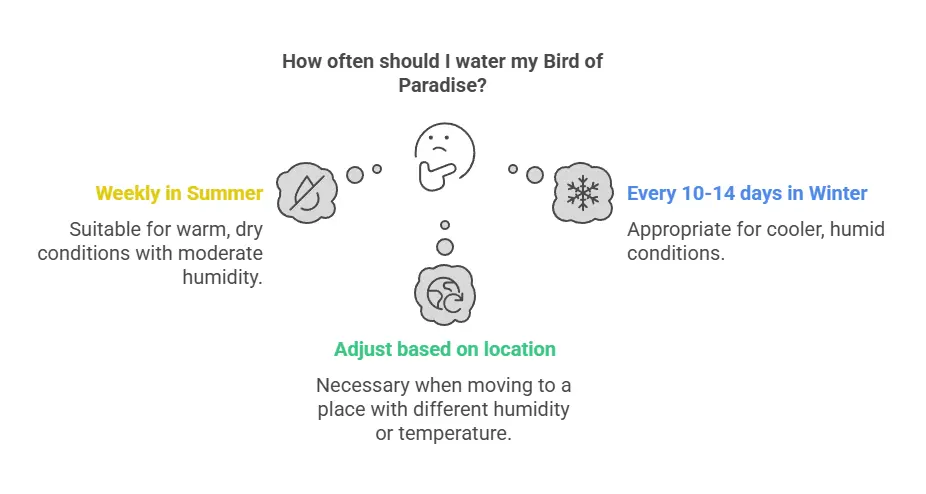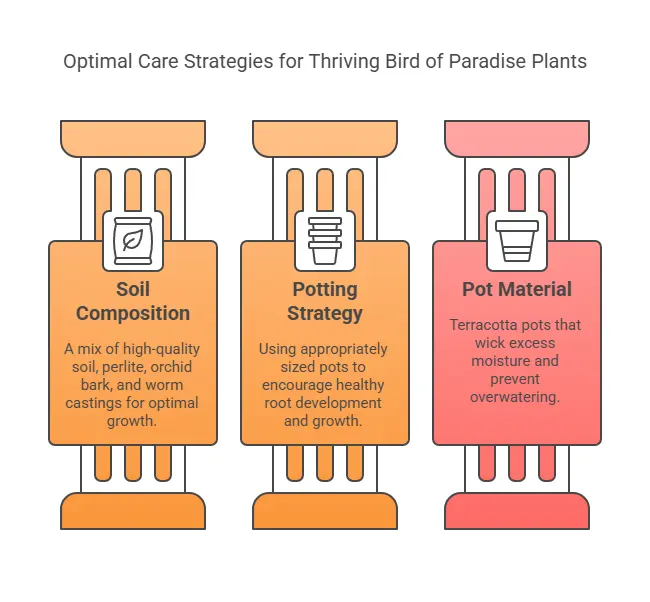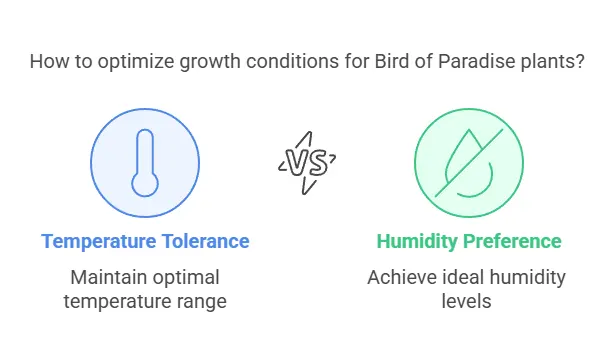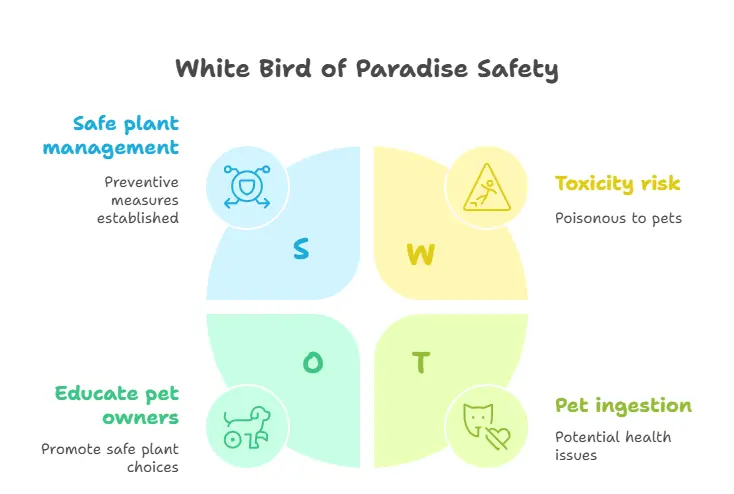Mastering the Giant White Bird of Paradise: A Complete Guide to Strelitzia Nicolai
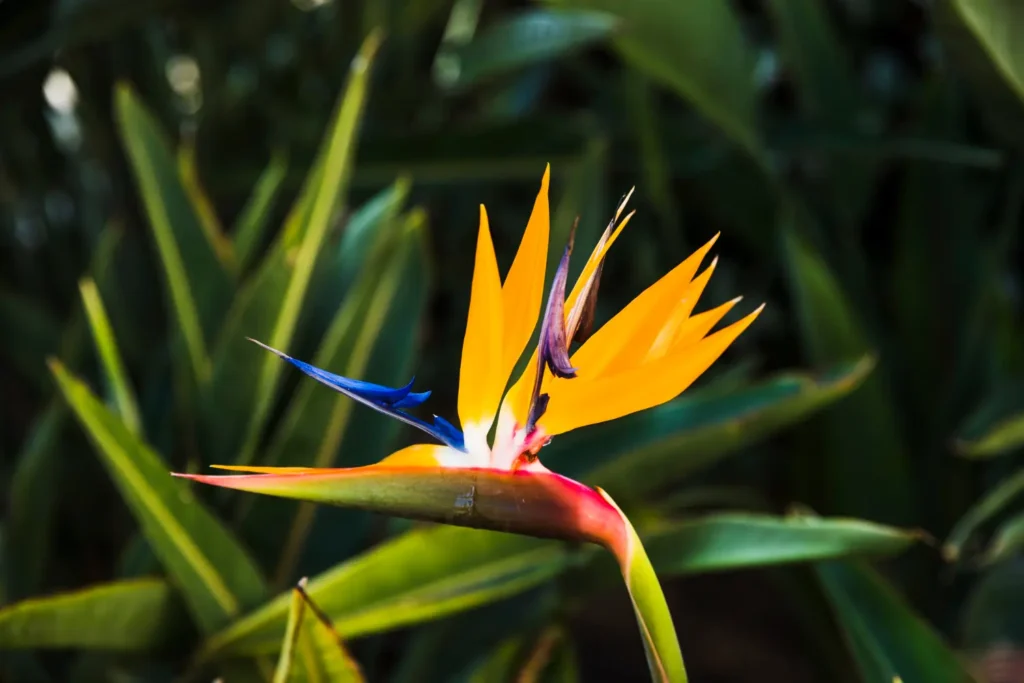
Mar
With its enormous, paddle-shaped leaves, the white bird of paradise, also known as Strelitzia nicolai, lends a dramatic tropical flare to any room. I have been a caretaker of these lovely plants for more than a decade, and during that time I have discovered that, despite their exotic look, they are remarkably adaptive to the circumstances that are found indoors when they are given the appropriate attention. The purpose of this guide is to assist you in successfully cultivating the huge white bird of paradise in your own place by compiling this guide with my own experiences and research.
What Is Strelitzia Nicolai and How Does It Differ from Other Bird of Paradise Plants?
Strelitzia nicolai, sometimes known as the white bird of paradise, is a stunning evergreen plant that is indigenous to the coastal woodlands of South Africa. In contrast to the smaller orange bird of paradise (Strelitzia reginae), which normally grows to a height of three to five feet, the white variant of the bird of paradise is actually a big bird of paradise, reaching heights of twenty to thirty feet in natural settings and six to ten feet inside.
I have cultivated both species, and I can affirm that the primary visible difference between them is the size of their blossoms and their scales. In contrast to Strelitzia reginae, which produces blooms that resemble cranes and are orange and blue in color, Strelitzia nicolai grows an inflorescence that is bigger and white and blue in color. Another distinguishing characteristic of the white bird of paradise is its banana-like leaves, which is significantly bigger and organized in a fan-like arrangement. Both of these plants are members of the family that was named after Queen Charlotte of Mecklenburg-Strelitz, who was renowned for her interest in botany throughout the 18th century.
What Light Requirements Does a White Bird of Paradise Need to Thrive?
According to my observations, the optimal conditions for the growth of white bird of paradise plants are six to eight hours of strong indirect light every day. During the course of a remodeling that required me to move my six-foot specimen from a window facing east to one facing north, I noticed that the development was substantially slower and the foliage was less brilliant. This occurred within only two months in the process.
Generally speaking, windows that face east or west give the best possible lighting conditions. In order to avoid the leaves of the plant from being scorched by direct sunlight, it is recommended that the plant be placed three to four feet away from the glass in windows that face south. Due to the fact that these plants naturally direct their wide leaves toward light sources, I have discovered that rotating my pot every three months helps maintain even growth because of this. A grow lamp that is positioned 12-18 inches above the canopy and is used for 4-6 hours each day is a supplement that I use during the winter months when the days are shorter.
How Often Should I Water My Bird of Paradise for Optimal Growth?
Providing enough irrigation is perhaps the most challenging component of caring for a bird of paradise. Through a process of trial and error, as well as one instance of root rot that came dangerously close to being deadly, I have discovered that these plants love for their soil to dry out somewhat in between waterings.
When I check mine, I stick my finger approximately two inches into the soil. If it feels dry at that level, it is time to water it completely. To check mine, I enter my finger. This means that I will need to water my plants around once per week during the summer months and every ten to fourteen days during the winter months. Our indoor environment is mild. I use water that is at room temperature, and I make sure that the saucer is completely drained by emptying it thirty minutes after I have watered it.
Depending on the size of the pot, the humidity in the area, the temperature, and the time of year, the demand for watering for your specific plant will change. When I relocated from Atlanta to Denver, I had to make considerable adjustments to my watering routine since the humidity levels in Denver are much different than those in Atlanta.
Is the White Bird of Paradise Easy to Grow Indoors?
Despite the fact that it is not as forgiving as snake plants or pothos, the white bird of paradise is quite simple to care for indoors provided that the circumstances are appropriately maintained. The most difficult obstacle is finding a way to accommodate its size; large plants are not suitable for tiny flats or locations that are restricted.
My first specimen was first grown on a countertop, but it rapidly became necessary for it to be moved to the floor. In the span of three years, it went from being a juvenile measuring two feet to a statement piece at five feet. When compared to specimens grown outside, the pace of development of the plant is much slower when it is grown inside, which is really beneficial for the culture of the plant indoors.
In spite of its size, I’ve discovered that the bird of paradise is very adaptive to the circumstances that are often present indoors. It is a good indoor plant for beginners who are prepared to offer appropriate space since it does not need any special equipment other than the occasional dusting and periodic fertilizing necessary for its maintenance.
What Type of Soil and Pot Does a Bird of Paradise Plant Prefer?
As a result of my research and testing with various potting mixes, I have discovered that the soil in which bird of paradise plants thrive is one that is both well-drained and maintains a certain amount of moisture. My current mix includes the following:
A potting soil of 60% high-quality, 20% perlite for drainage, and 10% orchid bark for aeration are the components:
For nutrients that are released gradually, 10% worm castings
Only pots that are two to three inches greater in diameter than the root ball have proven to be the most successful for me when it comes to containers. It may seem counterintuitive, but these plants actually blossom more easily when they are loosely linked by their roots. After almost four years of flourishing in the same container, my eldest bird of paradise began to exhibit signals that it need more room. These indicators included roots growing out of drainage holes and a reduction in its overall development.
I have found that terracotta pots are very useful for me since they are able to wick out excess moisture and prevent me from overwatering my plants. Whatever container you decide to use, it is essential that it has enough drainage. If more holes are required, drill them in order to avoid water from accumulating at the bottom of the container.
Can a White Bird of Paradise Flower Indoors?
After seven years of cultivating white bird of paradise plants inside, I have only seen the plant blossom once, and that was after it had achieved a significant level of maturity (about six years old). Although the blossoming of Strelitzia nicolai indoors is very uncommon, it is not impossible if the circumstances are right.
Flowering indoors necessitates the following, according to interactions with other growers and staff members at botanical gardens:
Adulthood (five years or older)
Strong and unwavering illumination
Conditions with a little root-bound feel
Consistent feeding throughout the growth season Warm temperatures throughout the whole year
The breathtaking foliage of these paradise plants makes them worthwhile to cultivate even in the absence of blooms. Despite the fact that the white and blue blossom that my plant ultimately produced was stunning, it only lasted for a brief period of time in comparison to the everlasting beauty of its architectural leaves.
What Temperature and Humidity Levels Do Bird of Paradise Plants Need?
The bird of paradise thrives at temperatures ranging from 18 to 29 degrees Celsius (65 to 85 degrees Fahrenheit), according to my studies of my plants throughout the seasons. During a power outage that occurred during the winter, the temperature in my house plummeted to 55 degrees Fahrenheit for a short period of time. The plant’s leaf edges were somewhat browned, but it immediately recovered once temperatures returned to normal.
In comparison to other tropical species, these plants are more tolerant of their environment in terms of humidity. In the usual indoor humidity range of forty to fifty percent, my specimens continue to develop in a healthy manner; nevertheless, it is evident that they prefer greater humidity when it is available. When opposed to the dry circumstances that prevail throughout the winter, I have seen that my plants have more robust development and fewer leaf problems during the humid summer months. However, I do not utilize a humidifier expressly for my plants.
I combine my bird of paradise with other plants that have huge leaves and periodically water the leaves during times when the weather is extremely dry. This helps me create a microclimate that is conducive to the plant. This seems to prevent the curling of the leaves and the browning of the edges that may occur in settings that are very dry.
How Do I Prune and Maintain a Healthy White Bird of Paradise?
The finest appearance of a white bird of paradise may be maintained with regular upkeep. It is largely for the purpose of removing damaged or dead leaves that I trim my plant on a regular basis throughout the year. I used shears that were clean and sharp to clip undesired leaves at the base, where they emerge from the main stem, rather than cutting them in the middle of the leaf, which would have resulted in brown edges that were ugly.
It is easy for dust to gather on the wide leaves, which hinders the plant’s capacity to effectively produce energy via photosynthesis. Every month, I use a moist microfiber towel to wash out mine, being sure to hold the leaf from beneath in order to avoid it from breaking. Instead of letting the plant lean toward its light source, I’ve discovered that rotating the pot on a quarterly basis provides uniform growth. This is the case after I’ve tried a variety of different ways.
Emerging leaves often need temporary assistance before they are able to completely unfold and become stronger. In situations where they are required, I make use of bamboo stakes and soft plant ties. I remove them after the leaf is able to hold itself, which is normally after two to three weeks.
What Are Common Problems with the White Bird of Paradise and How Do I Fix Them?
As I’ve grown these plants over the years, I’ve run across a few problems, including the following:
A common sign of overwatering is the presence of yellow leaves. As soon as this occurred for the first time, I immediately stopped watering, examined the root ball for any signs of rot, and waited until the soil had fully dried up before beginning a reduced watering regimen. Within one month, the plant was able to recover.
Generally speaking, brown leaf margins are an indication of low humidity or salt accumulation caused by fertilizer. As a solution to this problem, I make sure to properly cleanse the soil with distilled water every few months and increase the ambient humidity whenever it is feasible to do so.
In my experience, the number of pest issues has been very low; nevertheless, I did had to deal with a mealybug infestation on a plant that I had just bought. I was able to effectively cure it by using a cotton pad to wipe out all of the leaves and stems with isopropyl alcohol. I repeated this process once a week for a period of one month.
In most cases, a plant that is experiencing stunted growth is in need of more light, new soil, or a larger container. It is often possible for me to discover and rectify the exact problem by using the process of elimination, which involves relocating the plant to a brighter spot, feeding it, and lastly repotting it.
Is the White Bird of Paradise Toxic to Pets?
White bird of paradise plants are poisonous to cats, dogs, and other pets if they are consumed. This is an essential aspect to take into account. There are substances in every part of the plant that, if taken in large quantities, might induce stomach distress and other more severe problems.
Upon discovering that my cat had an interest in my plant, I promptly established a “plant room” that was specifically designed to prevent her from possessing it. For families who have dogs that are naturally inquisitive, I would suggest either storing the plant in an area that is inaccessible or selecting alternatives that are not harmful.
Contact your veterinarian as soon as possible if you have any reason to believe that your pet has consumed any portion of your bird of paradise. Despite the fact that the majority of animals steer clear of these plants because of their rough texture, it is still best to exercise caution when choosing indoor plants for households that have pets.
How Do I Propagate a White Bird of Paradise?
During the process of repotting, I have successfully multiplied my white bird of paradise on two separate occasions by means of division. The most reliable method of propagation for Strelitzia nicolai is the separation of offshoots, often known as “pups,” which form their own root systems. This is in contrast to the majority of houseplants, which may be easily grown from cuttings.
Although the procedure is simple, it must be carried out with caution:
Hold off until spring, when the plant will be showing signs of full growth.
Take the plant out of its container in its entirety.
The identification of offshoots that have formed roots
Using a knife that is both sharp and sanitary, carefully detach them from the parent plant.
Containerize each division in the suitable soil.
To prevent the appearance of new growth, water sparingly.
It took my plants that had been propagated roughly three to four months to get established and to start growing new leaves. Although it is possible to propagate plants from seeds, the process is exceedingly slow. Germination may take anywhere from three months to years, and it can take much longer for plants to reach an astonishing size.
Why Does My Bird of Paradise Plant Not Look as Full as Expected?
I was dissatisfied with my white bird of paradise when I initially bought it since it did not seem like the lush, multi-stemmed examples that I had seen in design publications. After doing study and speaking with seasoned cultivators, I discovered various causes for this, including the following:
With the intention of producing specimens that seem to be fuller, commercial gardeners sometimes plant many stems in a single pot. What looks to be a single plant may fact be three to five distinct plants that have been gathered together. The look of naturally developed single specimens is often more architectural and less bushy than that of grown specimens.
To a considerable extent, light influences fullness. A plant that was planted in a window that faced east and received bright, indirect light generated more compact growth than a plant that was cultivated in a window that received less light, which stretched and produced fewer leaves.
Another aspect is age; mature specimens, which are those that are eight years old or older, naturally have a fuller look as they generate offshoots. After around five years of development, my eldest plant started to exhibit this multi-stemmed appearance when it was first growing.
It is possible to put one juvenile white bird of paradise together with two to three others in a bigger pot, with a few inches of space between each of them. This will result in a plant that seems fuller sooner.
Key Takeaways for Successful White Bird of Paradise Care
- It is recommended that you provide six to eight hours of strong indirect light each day; windows that face east or west are best.
- Water: Decrease the frequency of waterings throughout the winter months and let the top two inches of soil dry out between waterings.
- Use a potting mix that has a good drainage system and incorporates perlite and organic matter into the soil.
- Choosing a container that has drainage and is just marginally bigger than the root system is the essential step.
- Keeping temperatures between 65 and 85 degrees Fahrenheit (18 and 29 degrees Celsius) and avoiding cold drafts
- Standard indoor humidity of forty percent or greater is considered adequate; however, higher humidity is associated with improved development.
- For fertilization, use a balanced fertilizer that has been diluted to half strength on a monthly basis throughout the spring and summer months.
- Pruning: Remove dead leaves as soon as possible at the base; dust should be wiped off the leaves once a month.
- All plant components are harmful if they are consumed, thus it is important to keep them away from animals.
- The growth rate is around one to two new leaves every six to eight weeks under ideal circumstances.
- Space requirements include: Prepare for a mature height of six to ten feet inside, with a spread of three to four feet.
- By dividing existing plants during the process of repotting, rather than trying to grow from cuttings, propagation may be accomplished.


